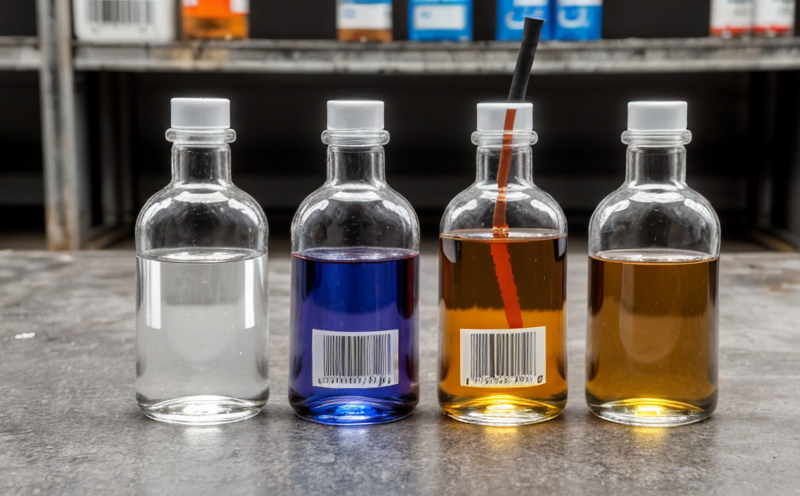ISO 13485 Stability Testing of Pharmaceutical Packaging
The International Organization for Standardization (ISO) has established a series of standards that ensure quality management systems in various industries are effective and robust. Among these, ISO 13485 is specifically designed to provide the necessary requirements for medical device manufacturers. However, it also holds significant relevance when it comes to ensuring pharmaceutical packaging complies with stringent stability testing criteria.
Stability testing of pharmaceutical packaging plays a crucial role in ensuring product integrity and safety over time. The ISO 13485 standard emphasizes the importance of preventing contamination during storage and transportation. This ensures that any pharmaceutical product remains effective, safe, and stable under specified conditions until its expiration date. This service provides an essential framework for manufacturers to verify their packaging meets these stringent requirements.
The testing process involves exposing sample containers to various environmental stressors such as temperature, humidity, light, and even time. By simulating real-world storage conditions, we can predict how the packaging will perform over its entire shelf life. The goal is to identify potential issues early on so that corrective actions can be taken before products reach consumers.
Accurate sample preparation is critical in ensuring reliable results from stability studies. Samples must represent actual commercial packaging used by patients and healthcare providers. This includes considering factors like material composition, design features, and print quality if applicable. Once prepared, these samples undergo rigorous testing according to ISO 13485 guidelines.
Instrumentation plays an integral role in conducting thorough stability tests. Various pieces of equipment are utilized depending on the specific parameters being evaluated. For instance, climate chambers allow controlled exposure to different combinations of temperature and humidity levels. Spectrophotometers measure color changes indicative of degradation. Accelerated aging devices provide faster simulation of long-term effects.
After completing all necessary experiments, detailed reports are generated summarizing findings from each phase of the study. These documents serve as comprehensive records demonstrating compliance with relevant regulations while also offering valuable insights into product performance throughout its lifecycle.
The significance of ISO 13485 stability testing cannot be overstated for pharmaceutical packaging manufacturers. It not only helps maintain regulatory compliance but also enhances trust among consumers by ensuring consistent quality standards across all batches produced. By adhering to these stringent protocols, companies can confidently market their products knowing they meet the highest industry expectations.
Our team of experts uses cutting-edge technology and methodologies to conduct ISO 13485 stability testing on pharmaceutical packaging effectively. We offer tailored solutions designed specifically for your needs, providing peace of mind regarding product integrity and safety.
Customer Impact and Satisfaction
Enhanced product safety: Ensures that packaged medications remain effective and uncontaminated throughout their shelf life, thereby protecting patient health.
Better regulatory compliance: Helps pharmaceutical companies meet stringent quality control requirements set by global regulatory authorities like FDA and EMA.
Increased consumer confidence: By providing consistent product performance across all batches produced, this service boosts trust among consumers who rely on these medications daily.
Cost savings through early issue detection: Identifying potential problems before they become major issues saves time and money associated with recalls or rework.
In summary, ISO 13485 stability testing is a vital step in ensuring the quality and safety of pharmaceutical packaging. Our comprehensive approach ensures that every aspect of the packaging process is carefully examined, leading to satisfied customers and regulatory approval.
International Acceptance and Recognition
ISO 13485 stability testing enjoys widespread acceptance globally due to its rigorous standards and focus on quality management systems. Many countries have adopted this standard as part of their own regulations, recognizing the importance of maintaining consistent product integrity across borders.
The United States Food and Drug Administration (FDA) has incorporated many elements from ISO 13485 into its Quality System Regulation (QSR), further emphasizing its relevance in ensuring medical device quality. Similarly, European Union directives like MDD and IVDR draw heavily upon the principles outlined within this standard.
By adhering to these internationally recognized guidelines, pharmaceutical packaging manufacturers can demonstrate their commitment to excellence and reliability, gaining a competitive edge in both domestic and international markets.
Environmental and Sustainability Contributions
In addition to its direct benefits for product safety and regulatory compliance, ISO 13485 stability testing also contributes positively towards environmental sustainability goals. By identifying potential issues early on, manufacturers can implement changes that reduce waste associated with failed batches.
This proactive approach not only minimizes resource consumption but also helps minimize adverse impacts on the environment by preventing contaminated products from entering the supply chain. Furthermore, implementing sustainable practices during packaging design and production aligns directly with broader corporate responsibility initiatives aimed at reducing ecological footprints.
Overall, ISO 13485 stability testing plays a crucial role in fostering responsible manufacturing processes that benefit both consumers and the planet.





